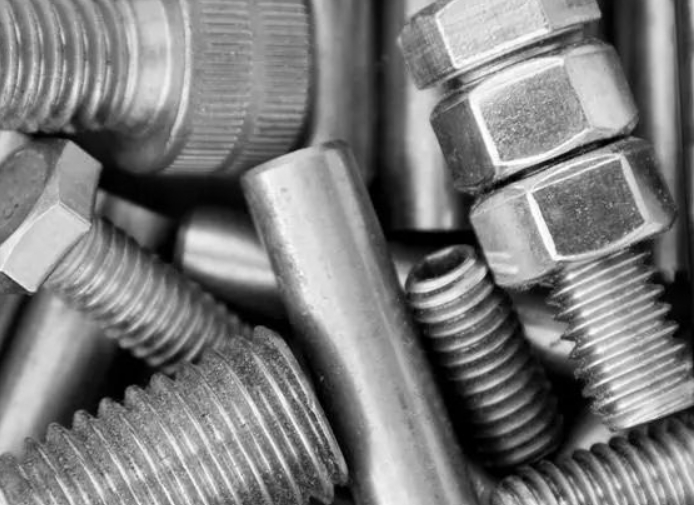
As we all know, the material classifications of stainless steel screws include austenitic stainless steel, ferritic stainless steel, martensitic stainless steel, and precipitation-hardened stainless steel. The selection of stainless steel screws also follows certain principles. Here are some aspects to help you choose the stainless steel screws you need.
Many screw professionals may not know that they can determine the grade, type, specification, and material standard of stainless steel screws after comprehensive consideration of the following five aspects:
- Ferritic Stainless Steel
430 is a common chromium steel with better corrosion and heat resistance than 410. It is magnetic but cannot be strengthened through heat treatment. It is suitable for stainless steel screws with slightly higher corrosion and heat resistance requirements and moderate strength requirements.
- Martensitic Stainless Steel
410 and 416 can be strengthened through heat treatment, with hardness ranging from 35 to 45 HRC and good machinability. They are used for general-purpose heat-resistant and corrosion-resistant stainless steel screws. 416 has a slightly higher sulfur content and is free-cutting stainless steel. 420, with a sulfur content of R0.15%, has improved mechanical properties and can be strengthened through heat treatment, reaching a maximum hardness of 53 to 58 HRC. It is used for stainless steel screws requiring higher strength.
- Precipitation-Hardened Stainless Steel
17-4PH and PH15-7Mo can achieve higher strength than conventional 18-8 stainless steel, making them suitable for high-strength, corrosion-resistant stainless steel screws.
A-286 is a non-standard stainless steel with higher corrosion resistance than commonly used 18-8 stainless steel and maintains good mechanical properties at elevated temperatures. It is used for high-strength, heat-resistant, corrosion-resistant stainless steel screws up to 650 to 700°C.
- Austenitic Stainless Steel
The commonly used grades are 302, 303, 304, and 305, known as "18-8" austenitic stainless steel. They have similar corrosion resistance and mechanical properties. The choice depends on the production process of stainless steel screws, which in turn depends on the size and shape of the screws and the production quantity.
302 is used for machined screws and self-tapping bolts.
303 contains a small amount of sulfur to improve machinability and is used for nuts processed from bar stock.
304 is suitable for stainless steel screws processed using hot heading processes, such as bolts of longer specifications and large diameters, which may exceed the scope of cold heading processes.
305 is suitable for stainless steel screws processed using cold heading processes, such as cold-formed nuts and hex bolts.
309 and 310 have higher chromium and nickel contents than 18-8 stainless steel and are suitable for stainless steel screws operating at high temperatures.
316 and 317 contain the alloy element Mo, resulting in higher high-temperature strength and corrosion resistance than 18-8 stainless steel.
321 and 347 contain the stabilizing alloy elements Ti and Nb, respectively, improving their intergranular corrosion resistance. They are suitable for stainless steel standard parts that do not undergo annealing after welding or operate at temperatures between 420 and 1013°C.
The grades of stainless steel bolts are classified as 45, 50, 60, 70, and 80, with materials mainly Austenitic A1, A2, A4, Martensitic and Ferritic C1, C2, C4. The notation, such as A2-70, indicates the bolt material and strength grade before and after the "--".
The grades of carbon steel bolts are classified into more than 10 grades, including 3.6, 4.6, 4.8, 5.6, 6.8, 8.8, 9.8, 10.9, and 12.9. The numbers before and after the decimal point represent the nominal tensile strength and yield-to-tensile ratio of the bolt material, respectively. For example, a grade 8.8 bolt indicates a tensile strength of 800 MPa and a yield strength of 800×0.8=640 MPa.
-
Common bolt materials include Q215, Q235, 25, and 45 steel. For important or special-purpose threaded fasteners, alloy steels with higher mechanical properties such as 15Cr, 20Cr, 40Cr, 15MnVB, and 30CrMrSi can be selected.
-
SUS304 (0Cr18Ni9, also known as A2) is mainly used for the manufacture of ordinary stainless steel bolts, screws, washers, and nuts, with a typical strength grade of 70 for bolts.
-
SUS316 (0Cr18Ni12Mo2) and SUS316L (00Cr17Ni14Mo2), also known as A4, are mainly used for the manufacture of high-corrosion-resistant stainless steel bolts, screws, washers, and nuts, with a typical strength grade of 70 for bolts, and can also reach a high strength grade of 80.
-
A represents Austenitic, 2 represents the second material (specifically 304), and -70 represents a strength grade of 700 MPa. Common materials are A2 and A4, which correspond to 304 and 316, respectively.
-
There is no difference in material between stainless steel bolts A4-70 and A4-80. The 70 and 80 behind A4-70 and A4-80 represent one-tenth of the minimum tensile strength of the fasteners. Being Austenitic stainless steel, they cannot be strengthened through heat treatment. Their tensile strength is increased through dislocation blocking after deformation (commonly known as cold work hardening). A4-70 bolts are more commonly available on the market.
-
A1, A2, and A4 represent 302, 304, and 316, respectively; 45, 50, 60, 70, and 80 represent one-tenth of the minimum tensile strength of the fasteners.
7. The four groups belong to Austenitic stainless steel developed for boiling sulfuric acid, hence the name acid-resistant steel. They are metastable acid-resistant steels, with SUS316 being a typical representative.





 Customer service 1
Customer service 1  Customer service 2
Customer service 2